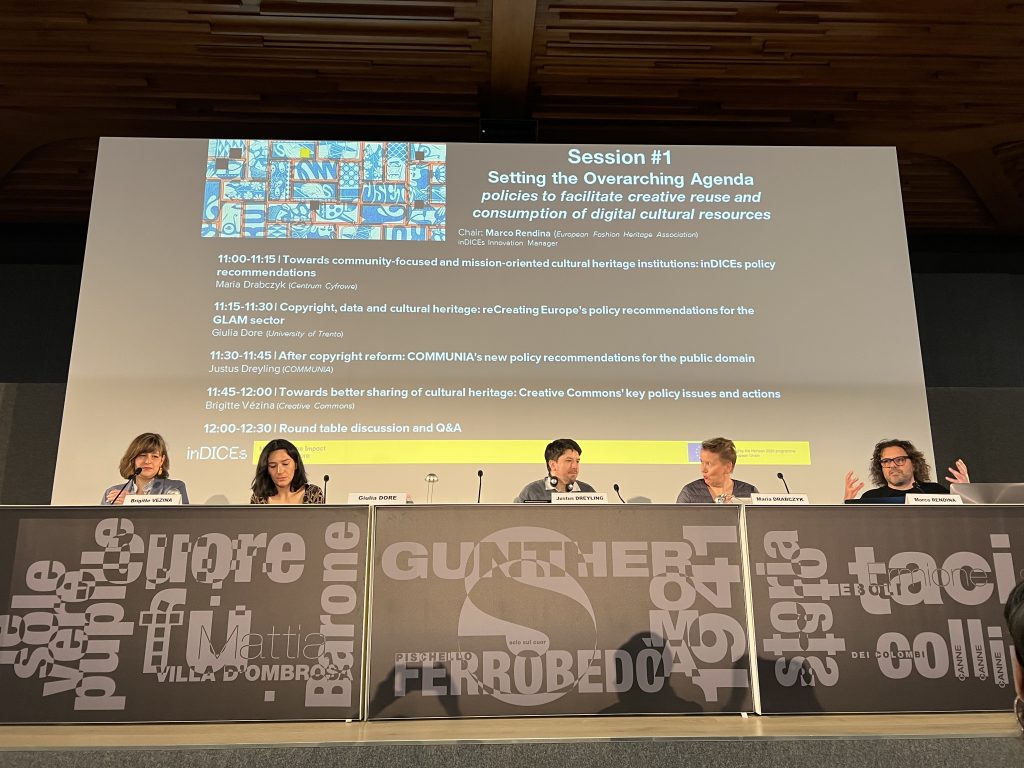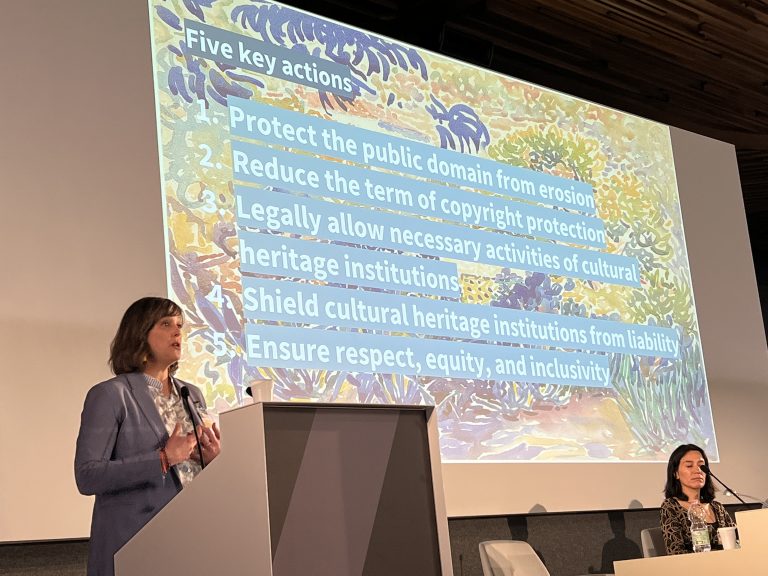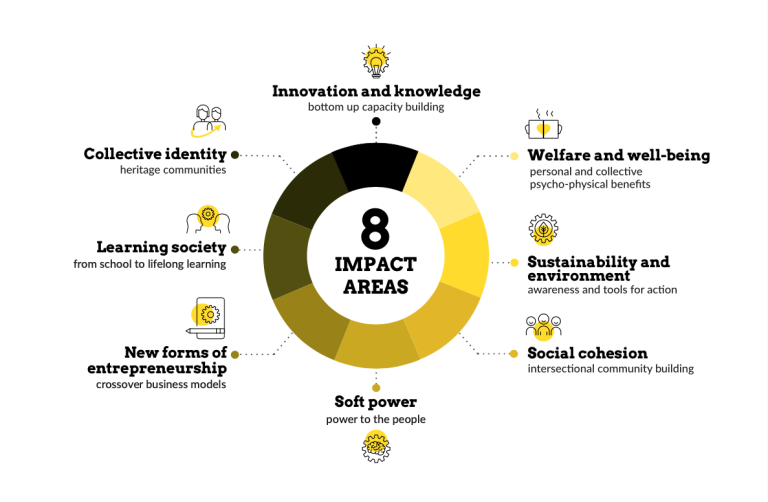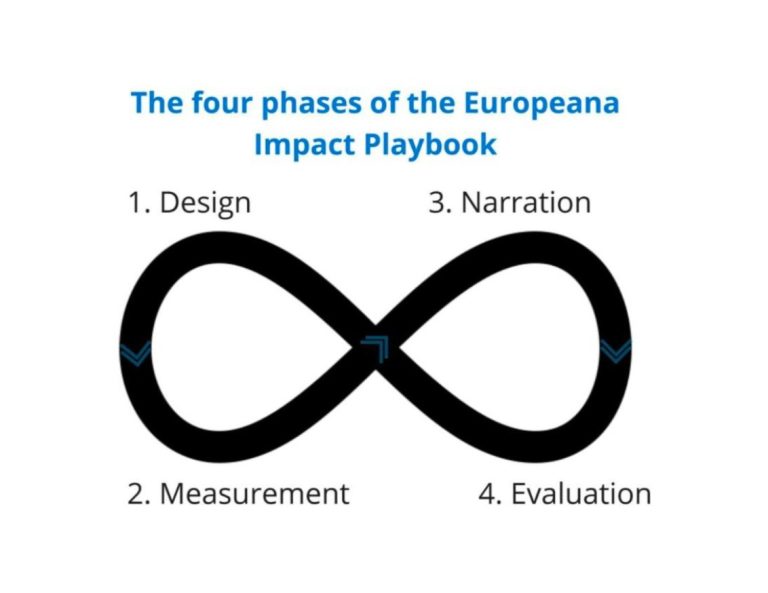Community & Digitisation - the new drivers of cultural heritage - event report
On 2 March 2023 inDICEs organised a one-day conference with the title COMMUNITY & DIGITISATION – the new drivers of cultural heritage. In this blog post, we bring you the key insights from the event.

The conference attracted a broad and international audience from all over Europe as well as other countries such as the USA, Canada and India. More than 300 participants (approximately 70 in-person at the National Library in Rome and 230 online) attended the event. The event started with opening words from Laura Moro (Central Institute for the Digitisation of Cultural Heritage – Digital Library) and the keynote speakers: Anne Luther (Institute for Digital Heritage) and Pierluigi Sacco (University of Chieti-Pescara).
Throughout three sessions, digital strategies and use cases were presented and discussed with the attendees. Initially the discussion focused on a critical analysis of existing policies focused on facilitating access and reuse of digital cultural resources and permeating different types of cultural consumption. Next, our speakers considered opportunities to transform the ideas, concepts and suggestions presented in the policies into concrete actions and activities that enable and facilitate access to digital cultural resources. Furthermore, the debate was around instruments to measure the effectiveness of such cultural actions and the impact of culture on social and economic development. Finally, to wrap up the day, the presenters debated tools, use cases and good practices. The conversation tried to understand and critically assess how open access to digital assets can transform and positively impact groups and communities directly (or indirectly) connected to cultural heritage institutions (CHI) and initiatives that aim to preserve and disseminate cultural heritage (CH).

In her Keynote Anne Luther (Institute for Digital Heritage) presented the results of Digital Benin project – a platform bringing together over 5,000 digital Royal Benin objects from the collections around the world. The model on which the project was built is twofold. Firstly, it connects data from over 130 institutions internationally without changing the diversity, multiplicity and locality of the data and data structures that the hosting institutions use to store, collect and preserve information about objects in their collections. Secondly, it focuses on recontextualisation when bringing data out of its institutional context and in relation to a community-driven, in-situ and culture grounded embeddedness.
The success of the project depended on keeping databases in their places, respecting different standards and licensing structures. Making the data searchable was made possible by creating a special filter connecting all the datasets to make all objects findable and through different descriptions and standards. A light platform design makes the platform and digital objects accessible in unstable wifi connections.
Session #1
Discussions on “Setting the overarching agenda – policies to facilitate creative reuse and consumption of digital cultural resources”
The panel was focused on discussing legal and policy recommendations pertaining to the digital heritage landscape. The general conclusion showed a strong consensus and common ground by all participants: inDICEs, ReCreating Europe, COMMUNIA and Creative Commons Policy Recommendations. Overarching topics were the immense power of outreach and creativity that is fostered by growing open access to cultural heritage collections. Cultural institutions need better policy and resource support to face challenges like climate change, health crises and armed conflicts, as well as to navigate copyright boundaries. Institutions still have a fear of opening up their collection and making it broadly available.

All of the panellists came with their insights and recommendations more or less at the same moment after the new DSM Directive from 2021. The main overlaps include the prevalence of public value over market driven DSM, shared position concerning the Public Domain, development of instruments fostering access and reuse of cultural heritage and data, and reduction of the term of copyright protection. Most notable shared recommendations were lifting geo blocking by COMMUNIA, advocacy for a European Digital Public Space by inDICEs, EU role in Cultural Heritage by ReCreating Europe, climate change and crises by Creative Commons.
Giulia Dore presented the Final Policy Recommendations for EU Lawmakers – a result of research for reCreating Europe, a sister project of inDICEs. The recommendations are grouped into six main knots, being: systematically reforming the EU Copyright Framework, clarifying and simplifying the EU copyright framework for cultural heritage, expanding and safeguard the public domain, boosting the EU role in cultural heritage, safeguarding the public value of cultural heritage through eu initiatives and educating and engaging with GLAM stakeholders to ensure fair balance of copyright interests.
COMMUNIA’s legal and policy advisor Justus Dreyling presented Policy Recommendations for the Public Domain. The 20 recommendations focus on four areas: measures to defend and expand the public domain, measures that protect and promote usage rights, measures to empower creators and their audiences and measures that create safeguards against copyright abuse. The recommendations and the Public Domain Manifesto are fundamental to COMMUNIA’s advocacy work.

Brigitte Vézina from Creative Commons is working together with those who want to give open access to cultural heritage to foster creativity. She presented Creative Commons’ policy brief Towards Better Sharing of Cultural Heritage – A Creative Commons Call to Action to Policymakers, a document that was based on preceding publications: the Barriers to open access and the Towards Better Sharing of Cultural Heritage — An Agenda for Copyright Reform.
Session #2
Discussions on “Translating policy to application – measuring the impact of culture on social and economic development”
Session #2 featured representatives from different European projects discussing tools for measuring the socio-economic impact of cultural activities and CHI initiatives.
Maria Tartari & Francesca Manfredini presented the inDICEs Change Impact Assessment Framework, a theoretical tool to help CHI professionals to understand and measure the impact of participatory activities in the digital sphere.
The framework is based on eight impact areas that can be used as a guide to design and evaluate participatory activities with digital heritage. This is complemented by a collection of case studies on the inDICEs Open Observatory that everyone is invited to contribute to.


Alba Irollo presented the Europeana Impact Playbook which is based on 4 phases: design, measurement, narration, and evaluation. In each phase, the Impact Playbook presents examples and tools to guide CHI in designing, measuring and narrating the impact of their activities. The tool is free and open to suggestions and adaptations.
Marzia Cerrai presented Impact Canvas. The tool provides a framework for CHIs to measure the social and economic impact of their cultural activities. At the same time, the tool helps to transform data into stories to be told to a broader audience. Impact Canvas can be used by start-ups and young companies as well as organisations and initiatives that have been running for a long time. It is freely available online in three languages (English, Italian, and Estonian).
Trilce Navarrete closed session #2 presenting an ongoing project that works in a new tool to value participation in the business model for cultural heritage institutions. The RECHARGE project revolves around a question that became very pertinent during the pandemic: How do we use participation as a driving force to make cultural heritage business models more sustainable? To answer this, RECHARGE uses Living Labs methodology in which citizens, corporate, policy makers and cultural heritage networks collaborate to collectively define and test models that would generate social, economic or environmental value for CHIs and their communities.
"Living Labs are dynamic spaces where ideas and solutions can be co-created, tested and iterated by collaborating stakeholders. The Living Lab offers methods for cultural heritage institutions, researchers, industry, communities, and government to co-design concrete solutions in real-life environments. Operating as 'innovation zones', Living Labs can bring together community knowledge with professional expertise for action-based projects."
Trilce Navarrete - RECHARGE project
It is evident that such tools are essential to ensure the efficient use of financial support and human resources. They are freely available and open for evaluation and improvement.
Session #3
Discussion on “Tools, use cases and good practices – assessing and improving our digital transition strategies”

Session #3 discussed the value of sharing experiences and allowing others to learn from the mistakes and successes by ongoing or completed initiatives. Digital transformation is understood, in this context, as the process and the result of using digital technology to transform an organisation and its insertion in the social context.
Nadia Nadesan presented the Self Assessment Tool (SAT) and the inDICEs Open Observatory, a digital tool developed by the inDICEs project using the open source Decidim platform. The SAT is conceived as an interactive environment where CH professionals can collaboratively learn how to convert digital ambitions into digital strategies and gather data to continuously monitor their performance. This tool is part of a larger online platform, the Open Observatory, which was developed by inDICEs partners to support collaboration, transparent deliberation and collective learning processes.
According to Anra Kennedy (One by One) people we work with are the agents of change. The Guide to Digital Transformation in Cultural Heritage assumes that digital transformation initiate with a conversation inside your organisation to identify starting points/prompts from where you can establish your work. It also indicates that digitally literate leadership is the base for digital transformation within an institution or society.
“Digital transformation is both the process and the result of using digital technology to transform how an organisation operates and delivers value. It helps an organisation to thrive, fulfil its mission and meet the needs of its stakeholders.”
Europeana Foundation
In her presentation, the Europeana Foundation’s Fiona Mowat focused on ENUMERATE, a study which aims to assess the state of digitisation, organisational capacity and collections reuse across European CHIs. ENUMERATE serves as a reliable baseline of statistical data about digitisation, digital preservation and online access to cultural heritage in Europe and it can help to steer future decisions.
The most recent ENUMERATE campaign took place in 2022. In the future, the findings will feed insights across the common European data space for cultural heritage, a flagship initiative of the European Commission. Fiona outlined how the data space is designed to turn the vision of a society boosted by digital data into reality, where information moves freely across sectors – securely, easily, usefully. In this way, the common European data space for cultural heritage will help many people and contribute to creative industries, while digital transformation will support the sector to speak the same digital language.
“Access to cultural heritage is vital to humankind - to our knowledge and understanding of who we are, where we’ve come from and what we can become.”
Europeana Foundation
Mariana Ziku and Bettina Fabos presented the work of the Digital Community Heritage Working Group, which aims to identify online initiatives where open access and inclusive transformation is present. The initial research results highlighted two types of communities. Place-based communities (bounded by a shared city, region or country) have the power to bring together people who can identify themselves through a shared history and memories and often rely on ties of friendship that strengthen engagement and participation. On the other hand, communities bounded by commonalities build bonds around common interests or values which can strengthen the shared practices. Another noteworthy finding of this research is that most initiatives enhancing community agency are non-GLAM communities. They are most often located in between GLAMs and other community initiatives
Sofie Taes and Roberta Pireddu (KU Leuven) wrapped up the presentations of the day with their talk on the MOOC Developing Digital Transition Strategies for Cultural Heritage Institutions. The course aims to support cultural heritage professionals at all stages of their careers to develop digital strategies. It has already reached 500 plus students and is still being offered online.
While the inDICEs project has come to an end, all its outcomes remain open access for all interested parties. We invite you to visit the inDICEs Open Observatory and engage in participatory activities to learn about digital transformation and forge collaborations with cultural heritage professionals across Europe.